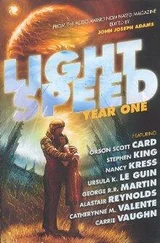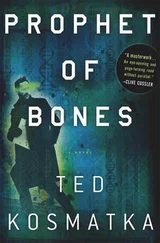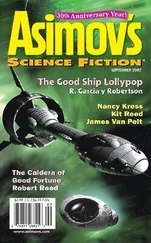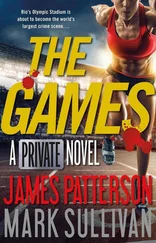She attended school for the first time when she was seven years old. She hadn’t been able to read, but still their tests had pointed her out, pulled her from the throng of slum children. They took notice of her, asked questions. They provided special tutors, and later, special classes. When she was ten, and they wanted to send her away, her mother resisted. By then, her mother had made several siblings for her to watch in the afternoon and needed the babysitter so she could go out and earn her money. Besides that, her mother learned there would be no formal religious training at the school for the sciences.
It was no wonder, really, how learning came to be so important to Vidonia. It had pulled her from the despair of the streets as no cathedraled savior ever could have.
Her educational route, after that, had run a circuitous course, leading her through ecology, microbiology, and genetics. Eventually, at the age of twenty-two, it led her to the United States, where she continued her studies in the life sciences.
Once she learned the rules that undergirded life on earth, it seemed only logical to attempt to apply them against a new backdrop. For her, the field of theoretical xenobiology was the inevitable destination of a long voyage.
Now, as she watched the strange organism romp through the nursery beyond the glass, she couldn’t help but feel that it had all been worth it. Here it was, at last. This creature was something different.
She didn’t understand fully how it came to be, but she didn’t have to. It was something new, and now it was her job to see if the rules had changed.
SHE WOKE early the next morning to her small, functional room. She’d decided yesterday that it suited her. She barely felt the water on her skin, tasted nothing of the toothpaste. Her clothes matched only because she had packed them that way. Her mind was elsewhere. She thought of John only in passing and only to marvel at having not thought of him the whole day before. Something about that felt good to her, not thinking of him, but she didn’t dwell.
She carded through the door of her lab, and the lights kicked on automatically. Butterflies wrestled in her stomach. She made the call. The minutes dragged on as she waited. Time enough for her to wonder at the strange twists of fate that had led her to this place. Time enough to begin to wonder if her mother’s God would approve.
Big men in white suits arrived with the young gladiator strapped to a gurney. Silas and Benjamin stepped in behind them. As per her orders, the specimen was sedated but not fully anesthetized. It could make the difference on her tests.
The men lifted the creature from the gurney and strapped it onto the silver specimen table in the center of the room. It writhed sluggishly for a moment before slumping into catatonia. Vidonia took her recorder from the front pocket of her lab coat and placed it on the table.
She hit the record button and began. “October twenty-second, initial evaluation of Helix project specimen at”—she paused, flipping through the pages Silas had provided her with—“age one hundred ninety-three days. And three hundred fifteen days since surrogate implantation by blastocyst F.”
She paused, looking at Silas and Ben. Then she turned back to the table and let her eyes play over the entire length of the organism.
“Specimen appears healthy. No signs of illness or injury. It has an approximate dorsoventral length of one hundred forty centimeters.” She looked at the digital readout on the table. “A weight of twenty-four kilograms. Skin is highly unusual in its reflective qualities and shows marked hyperpigmentation. No evidence of hair or dermal papillae.” She bent close, running a latexed finger across the abdomen. “Dermis appears smooth and absent of coetaneous structures of any kind. Specimen is hexapoidal, with three sets of differentiated symmetrical limbs. Upper posterior limbs appear modified for flight. Upper anterior limbs terminate in four digits”—she flexed the organism’s hand—“and an opposable thumb. Each digit terminates in a nail or claw, subdermal status of which is unknown at this time.”
“Be careful,” Silas said. He held up his hand.
She took a long breath. It wasn’t fear she felt but excitement. A slight tremor thrummed in her left leg, so she stepped back from the table and poured herself a glass of water from the sink against the wall. She felt the coolness slide down her throat and settle in her stomach. Ben and Silas remained silhouettes beyond the bright ring of light, and she was thankful of that. She stepped back to the table.
“The cranium is large, oblong in general shape, tapering to a point in the back. The eyes are large and forward-facing, light gray in color, with vertical pupils. Approximate field of binocular vision is”—here she stopped, her face tensed in thought—“one hundred sixty degrees.” Behind her, Silas made a sound. She went on.
“Immature or flaccid cartilaginous ears sit high atop the head. The cartilage is thick at the base, thinning near the tip. The face is large, prognothic, and hyper-robust in bone structure. The mouth is broad and forward-projecting.”
She used a wooden tongue depressor to open the creature’s jaw, looked in. “Dental pattern is complex and differentiated, atypical mammalian pattern. Omnivore, probably.”
“Omnivore?” Silas spoke from the shadows.
“It’s hard to tell for sure. The large canines provide a tearing apparatus in the front, but the molars are five-cusped—good for grinding up tough grains or vegetable matter. I’m not sure what to make of this second row of teeth. The pattern is unique, to my knowledge—looks like they could be used for shearing of some kind, almost like a row of wire cutters. I can’t imagine what foods they could be used for.”
“Bone shearing,” Silas said. His hand flexed.
“Yeah, maybe that.”
She turned the recorder off and began the next phase of the evaluation.
It started with the drawing of blood. The shiny black organism shivered oddly as she took twenty-five ccs from its right forelimb. She then took twenty-five ccs from its left hind limb. She placed the blood samples into the refrigeration unit beneath the counter and wheeled the specimen to the X-ray machine. She motioned for Silas and Ben to get behind the leaded glass and made final adjustments to the orientation of the machine. She joined the men and hit the button.
They let her work without commenting, and she was silently pleased at their deference for her expertise. She activated the fluoroscope again and watched the image assemble on the computer screen. When the read was complete, she stepped around and rotated the position of the specimen for a final shot. She didn’t bother to print out the sheets—time enough for that later. She wanted the specimen in an altered state for as short a span of time as possible. The effect that drugs might have on the organism was difficult to calculate.
Using a scalpel, she shaved off bits of skin from the lower back of the organism. “Typically the least sensitive part of the dermis,” she said, as she put the sample into a plastic cup, which was then placed alongside the blood samples in the refrigeration unit.
Nuclear resonance was last, and would be most telling. Her students had called it the magic camera, and the magic camera could see all. The creature barely stirred as the big men in white maneuvered its slumped form into the cylinder. Across the room from the scanner, Silas and Ben stood, looking over her shoulder at the computer screen. The image told a strange story as it rotated.
She tried to remain calm, but it was a losing battle. Instead, she tried to appear calm, and this she had some success with. She wasn’t sure what exactly she was seeing. Certain organs she recognized; others were strange to her. “There’s the liver,” she said, pointing to the conspicuously placed organ. It was a start, a point of reference. She found the heart next, narrowing the focus of the machine until she could watch the blood coursing through the arteries and veins. She blinked her eyes, squinted, but the heart still had six chambers.
Читать дальше












